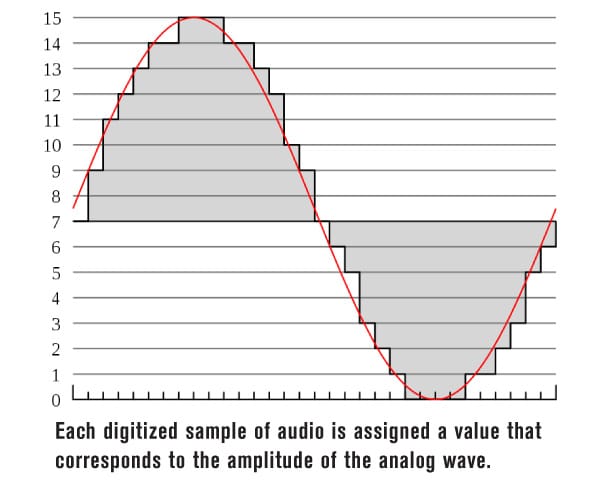Everything I’ve learned about Computer Audio, since I got started back in 2008, has taught me that Jitter is the one area to focus on. Of course digital audio involves transferring bits of data between a source (disc player or computer) and a DAC. However, it’s more of a mystery what’s actually going on inside. You’ve heard terms like Bit Rate, Sample Rate and Clock. There’s a very precise timing that goes on when data is transferred between the source and DAC and it’s never consistently perfect. Jitter is the measurement of how far this timing is off.
Both the Source and the DAC have a clock that each component uses to control timing and in a high-end system the DAC clock will direct the Source clock. Back to bits and samples…Redbook CD files are 16-bit of data delivered at 44.1K Hz; what that means is,16 bits of data are delivered from the source to the DAC at 44,100 samples/times each second. Therefore 24/192 files would be 24 bits of data delivered 192,000 samples/times each second. Now imagine the 16 bits as a 16-seat roller coaster car heading toward the DAC (44,100 times per second) and each sample comes out of a tunnel at the end, where the DAC clock snaps a picture of the car to read what data is in the car. If the car arrives too fast the picture misses the data in the front of the car, which has already gone past and if it arrives to slow the camera missed the data in the back of the car, which is still in the tunnel. The timing errors in snapping the pictures again is called Jitter. Jitter is measured in Pico Seconds (that’s Billionths of a second, with a B). Really good sound in a high performance system starts around 50 pico seconds and the theoretical limit of the human hearing to detect jitter is thought to be around 15 pico seconds. Now, if we’re striving to achieve data transfer timing within 15 billionths of a second and repeating this process tens or hundreds of thousands of times per second, you have an idea what we’re up against.
This article is an excellent source for more information about Jitter.
https://www.enjoythemusic.com/magazine/manufacture/0509/
We mentioned Latency above, that’s because Latency and Jitter go hand in hand. Latency is a measurement of the delays incurred as your audio file data travels through the Source. Latency delays result in more Jitter. With my music servers the strongest correlation I’ve found to better sound is lower latency. There’s a single setting on the motherboard we’re using in our current reference music server that will jack up the latency readings substantially and jack up the sound as well. There’s a simple tool called DPC Latency Checker that audiophiles can download free and check the latency of any Windows computer (without having to install anything). On our reference server the latency readings hover around 7 milliseconds, while the machine is at complete idle. The same test on a stock machine without tweaks to the OS and BIOS would be about 80 to 150 and on a high performance system the difference in sound quality between a machine that reads 7 and a machine that reads 80 is substantial. To get to a value of 7 with Windows takes a lot of work. In the servers we build for clients we focus almost entirely on disabling parts of the OS and motherboard that aren’t directly related to playing music files or keeping the computer stable (such as Services, Drivers, System Settings, Registry Settings and BIOS Settings). You don’t have to buy a server to get this performance (most products out there won’t fare too well with the DPC test). The information is out there on the Internet. All you need is Google and a willingness to devote a lot of time learning how to build your own machine.
Here’s an excellent article about Latency and some great pointers to get started with your own machine. Note: I recommend you always image your OS and backup your HD before attempting to tweak your computer for audio, in case you accidentally corrupt the OS; you should be doing this anyway, unless you like living dangerously.
If you’re really interested in reading up on computer audio, here’s a link to articles from about a dozen of the most well-regarded digital component designers in the boutique audio arena.

